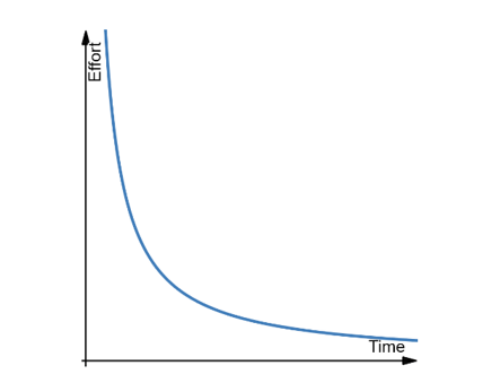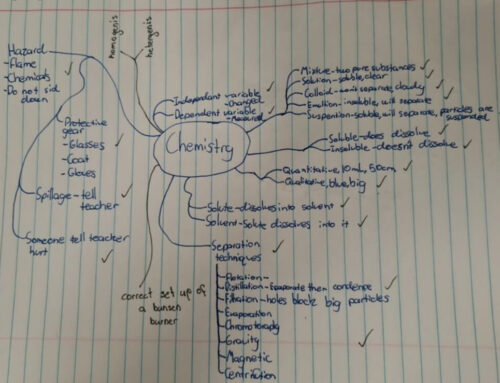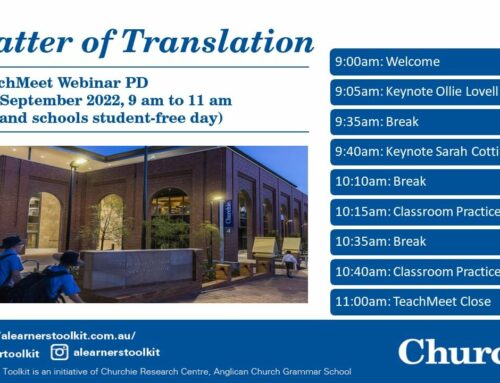This guest post comes from the Head of Mathematics at Churchie, Emilia Sinton.
Introduction
Being introduced to many new, closely related vocabulary can be problematic for all learners. However, students with dyslexia are particularly challenged to read, recall and use new terms in the classroom, and more so within the time constraints accompanying pen-and-paper examinations. Within the current syllabus version, the “graphs and network” topic within the Queensland General Mathematics syllabus is dense with mathematics-specific vocabulary for students to learn. Within this topic (afforded 12 of the semester’s 55 hours of teaching, or 4 to 5 weeks of teaching time), the syllabus directs teachers to assist students to “understand the meanings of…” 27 terms. Some of these 27 terms are context-specific words (e.g. Eulerian graph, Hamiltonian graph), and some are words already known to students but now have a new meaning attached (e.g. walk, trail, path). In summary, this topic suggests introducing 6 or 7 context-specific words each week in sub-topics that lead to several terms introduced simultaneously in a single lesson.
General mathematics teachers are in a position whereby they have to introduce and evaluate student understanding of these 27 terms in a short time. Effective vocabulary introduction and evaluation strategies matter because students will be asked to recall and use these terms within their external examination without seeking teacher assistance or clarification. For example, in 2022, the QCAA General Mathematics external examination Paper 1 comprised one question that provided students with a network and asked them to: identify a cycle, identify whether the graph was Eulerian or semi-Eulerian (with a justified response), and asked them to construct an adjacency matrix. That single question comprised four topic terms and required students to draw upon definitions to justify a graph type.
Following is one teacher’s experience with utilising ALT strategies to assist students with understanding and retrieving these definitions. Whilst initially planned as an accommodation for two students with dyslexia, all students in the class engaged in the learning phases. After these activities, there is evidence that students went beyond a rote-recall of terms and instead “understood the meaning of…” the topic terms.
Phase 1: Introducing new vocabulary (teacher explains and models, students do quick reviews, teacher checks for understanding). With each new definition, the teacher summarises the definition, emphasising points of difference. Students are encouraged to note-take their own definitions (make their own meanings) rather than reading and reciting textbook or glossary definitions. Each subsequent lesson incorporates all vocabulary in a quick review approach (vocabulary from yesterday, last week, last month). The teacher evaluates student meanings and corrects students if needed. The teacher evaluates class understanding and adjusts the quick review format if some vocabulary appears problematic (e.g., yesterday, two days ago, two weeks ago).
Phase 2: Scaffolding vocabulary understanding (teacher-guided practice, student retrieval) After introducing all topic definitions, the teacher guided the class through forming a classification system, and linking related terms (see Figure 1). Figure 1 is neither comprehensive of all topic vocabulary nor elaborates on all definitions. It is, however, an authentic snapshot of student retrieval of definitions created in situ. This snapshot formed the basis of future Brain Dumps.
Figure 1. Student-derived classification of topic vocabulary.
Phase 3: Fighting forgetting, Spaced retrieval (students do Brain Dumps, and the teacher evaluates). When the class has moved on to the next topic, students continue to complete Brain Dumps of the previous vocabulary (see Figure 2). The teacher cues them by drawing some empty “bubbles” on the whiteboard.
Figure 2. Student Brain Dump, four weeks later.
Exam Revision. During a lesson on revision for the IA3 exam, students were asked to record their Brain Dump of the topic on the classroom whiteboards (Figure 3). These Brain Dumps represent student recall eight weeks after Phase 2 (including school holidays). It should be noted that the students with dyslexia did not write these examples as they did not volunteer. However, they were observed to correct and assist the volunteers verbally. Across the three examples, we see a range of recall, some with glossary-worthy detail and some with colloquial language that is still accurate.

Figure 3. Three different student Brain Dumps of the graphs and networks topic.
Exam Execution: Similarly to the 2022 QCAA example mentioned earlier, the IA3 exam required the students to provide evidence to categorise a graph as semi-Eularian. Figure 4 shows the written responses provided by two students with dyslexia. It is important to note that the two students gave two different versions of a correct response. The teacher views the response variation as evidence of student understanding instead of a strategy whereby students may be encouraged to rote-learn definitions, resulting in all students providing the same response.

Figure 4. Written responses from two students with dyslexia.
For more teacher-friendly information and guidance about supporting students with dyslexia in their study of mathematics, please visit:










